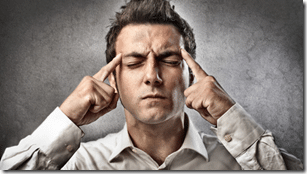Creative Safety – How can I become more creative?
 A common element of any safety system is to list and analyze hazards as part of a risk assessment process. But, when asked to think outside the square and come up with new actions to solve a problem, our brains go blank, get stuck in a rut and instead we tend to revert back to the traditional solutions that seem to have served us well in the past. Also, our brains have limited cognitive capacity, so asking people to come up with solutions on the spot could actually increase risk rather than mitigate it!
A common element of any safety system is to list and analyze hazards as part of a risk assessment process. But, when asked to think outside the square and come up with new actions to solve a problem, our brains go blank, get stuck in a rut and instead we tend to revert back to the traditional solutions that seem to have served us well in the past. Also, our brains have limited cognitive capacity, so asking people to come up with solutions on the spot could actually increase risk rather than mitigate it!
New ideas are hard to dream up because you can’t simulate an idea until you’re brain can associate it with something else from the past.
If you’re asked to come up with an idea for a new birthday party, you automatically think about previous parties you’ve been to and describe them in your brain to find a solution. You recall a piece of music that might have stirred you, or an act that you could possibly include.
If you really want to be creative you need to change the way you think and describe it in a totally different way. The way to achieve this is to firstly find the essence of the creative problem you’re trying to solve and then associate it with something else (perhaps something totally abstract).
In his book “Seeing What Others Don’t” Gary Klein provides many suggestions for finding creative ideas through connections, coincidence, curiosity, contradictions and creative desperation and the key is to challenge and foster ideas within workers, allowing them to be open with any suggestion that could provide a glimpse to a better solution.
The trick is not to put them on the spot (like asking for suggestions during a group meeting) when everyone is around, but to give them time to incubate their thoughts and allow them to grow into concepts over a longer period.
To get people to think creatively you could use a brainstorming technique by listing a core subject on a wall and asking people to add new ideas by placing post-it notes against a particular topic; or you might like to use a lateral thinking matrix with abstract headings such as shape, color, size, time, movement, fun, distance etc and get people to write their ideas against a specific field.
Broadening your vision
When carrying out manual tasks, like lifting heavy loads and tedious tasks such as counting nuts and bolts, we do better when we are being evaluated than when we are not. But in jobs which require us to be creative or to learn new techniques, we do better when we are not being watched and therefore not afraid of failure.
Positive emotions broaden our perception and thoughts and allow us to be creative and sometimes silly, by putting together something that which at first might appear stupid, but at a second glance actually makes sense. While negative emotions narrow our perceptions and thoughts, because we focus on a sense of failure.
Since the dawn of creation, our brains have been wired for survival and even today we think naturally more about threats than solutions. Indeed, there are twice as many negative verbs in the Oxford English Dictionary than positive ones, so it’s no wonder that our primary intention focuses towards bad things such as incidents, accidents and near hits, rather than all the good things people are doing right!
Fresh ideas run the risk of failure, so we biologically block off new suggestions when we perceive there might be serious consequences. So many good ideas don’t get passed the initial evaluation period because they become a threat to present day ones, which appear to work well and have already led to many hours of deliberation and significant cost.
Feedback from Senior Managers can be helpful in improving an idea or product, especially if it is sought by the creator, but ideas can often be stifled if the main goal becomes the feedback itself. Feedback does promote effort because we want to impress the evaluator, but effort alone is insufficient for true creativity.
We must allow people to relax in a way that allows the unconscious brain to dream up new ideas and this can be done by taking them away from the everyday pressures of work. This period doesn’t have to be too long and could be no more than fifteen minutes a week. Try it out and you will be amazed by the results. Indeed, Google have proven this works, growing the business exponentially by allowing their employees to spend 15% of their workday to dream up solutions to present problems and new innovative ideas independent to current platforms.
Concentration can be a killer
 How many times have you ran up against a brick wall in your mind at a safety briefing or meeting when you’ve been asked to come up with that formidable idea to pitch to a client or Senior Manager? Yet the harder you concentrate, the task only gets tougher.
How many times have you ran up against a brick wall in your mind at a safety briefing or meeting when you’ve been asked to come up with that formidable idea to pitch to a client or Senior Manager? Yet the harder you concentrate, the task only gets tougher.
You’re busy at work when your boss knocks on the door and asks for your help to solve an issue with a particular piece of safety gear. You immediately stop what you’re currently doing and sit down and rack your brains to find a solution. Yet, this common type of approach may in fact be stifling creativity instead of fostering it.
Some of the most creative thinkers of all time have exemplified the fact that best ideas come when you least expect it. Archimedes and the bath tub, Steve Jobs and the Apple computer, the 3M Post-It note all come from abstract thinking outside of work.
So if you want workers to come up with new solutions, allow them to turn their attention away from everyday operations and provide a little bit of concentration to jump start the process. Some suggestions could be allowing people to go to the gym at lunch time, walk in the woods or create a quiet area where people can read creative books.
Share and share alike
Copyright laws are meant to produce an abundance to new ideas and inventions by insuring protection against unlawful duplication. In short, the legal system focuses on external tangible incentives to incentify creation. However, new research in economics and psychology suggests otherwise.
Why, because we have self-serving biases that overestimates success and discounts failure. So if we encourage people to be more creative and we provide the right conditions for them to flourish the better our systems should become.
This somewhat irrational optimism suggests that safety in general can do better with less bureaucracy, and in fact too much legal protection can stifle innovation and lead to increased risk through repetitive boredom.
The real question we need to be asking, is how much protection is needed and how much ability to share, adapt, and rework ideas should workers be allowed? The new findings are implying that we need to strike a balance between compliance and worker resilience, providing clear and unambiguous guidance on the law to be adhered to, whilst stimulating people to try out new ideas and concepts.
Indeed many safety professionals are not keen to share their company’s ideas and thoughts, because it gives them an edge when competing for competitive tenders etc. However, if we want to have a significant impact on reducing worldwide incidents rates; perhaps the key is to set-up a global creative commons website, whereby anyone can upload documents, presentations, alerts, ideas with a powerful search function for industries, activities and cultures.
We all have the power to either hinder or facilitate the mechanics of creative problem solving, so when sitting at your desk mulling over a problem, take a break, step outside the boundaries of work and relax before becoming the next Edison.
Here are a few examples of safety innovation at its best:
Mark Taylor
Safety Matters (NZ) Ltd
26 Miles Lane
Tauranga
0220 723368



Do you have any thoughts? Please share them below